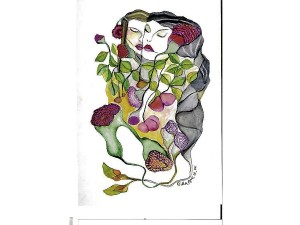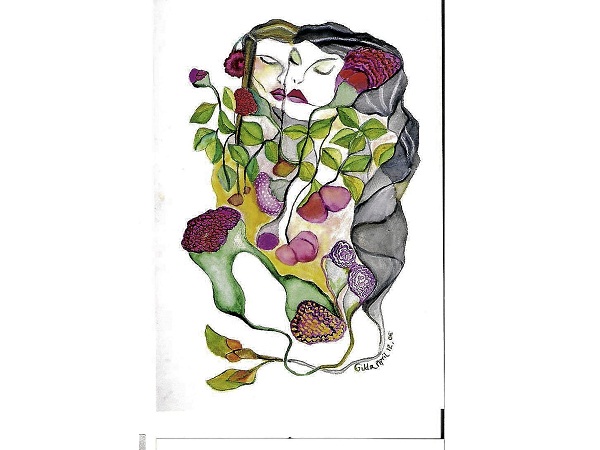
Odette Alcantara used to call me, with loving sarcasm, “Miss Universe” and I would retaliate by calling her “Miss World.” Little would I guess that I’d ever quarrel with such loving terms. And only because “universal” has come to mean “global.” And “globalization,” in the wrong sense of the word, as it is touted today, is a bad word. It is the standardization or popularization of everything that benefits the Western world. (Miss World’s world).
One of globalization’s most obvious effects is that today you can hardly tell one beautiful face from another—such as of new movie stars and beauty queens. Every face seems to have been modeled on an imported template, and comes complete with a ton of makeup products for sale to achieve that “perfect look.”
Charice Pempengco seems to have surrendered her round-as-a-moon face to such a siren call. This has erased the unique physical characteristic to remember her by. Now she is just another pretty face. (Of course there’s her talent to see her through). It’s almost unnecessary to talk about plastic surgery.
The characteristics of a remodeled face are just too familiar—the eyes pulled at the corners to stretch a furrowed brow, a nose startlingly turned Caucasian. No more double chin, no more turkey neck, and the smile can no longer be smiled. It can be surreal.
Quit eating. Exercise all day to look like an anchovy—it’s fashionable. If too slothful to do so, the body-sculpting clinic can give you a shape while you doze off.
Readers by teachers
There was once an attempt to democratize the writing of public-school readers. It was assigned to a group of grade-school teachers to write. The logic was that since it was taught by them every day, they’d be the best ones to write it. Who needs a snooty creative writer! The teachers undertook the writing of the reader, not as individuals, but as a group. Everything was a communal decision—how the plot, the characters, the style of the stories would go. The writing was communal, too. Needless to say, the book turned out disastrous. It had no character—it was boring and soon became a basket case. Democratic group work.
This reminds me of a lesser but also “democratic” undertaking—the choice of a uniform costume for a group of matrons to wear to an important affair. They zeroed in on the Gibson Girl look.
If you are not old enough to remember, the Gibson Girl in the ’50s had a long billowy skirt, mutton sleeves, a kind of collar and a little black ribbon bow at the neck. The design was passed around the table for suggestions. For the dress to look good on fat and thin alike, it was suggested that the skirt be straight. Approved! Aren’t the sleeves a bit warm—can we just shorten? Approved! What about removing the collar and just making the neck a V? Approved! Isn’t the little black bow a bit too young for us? Removal approved!
I never knew how the costume ended up because I couldn’t go to the party. But from where I was sitting that day, the Gibson Girl dress was beginning to look like a maid’s uniform.
Editing the ‘saya’
The saya is my favorite formal attire because it is basically Filipino. But how it has devolved from native to western is a morality tale worth remembering. Way before my time, the first couturiers dismembered the saya—removed its tail, its yoke (panuelo), its overskirt (tapis).
The next bright designers connected the blouse to the skirt to make it comfortable, and streamline the look to become one continuous flow. At the same time, they changed its material to a contemporary fabric. Beautiful, but it looked exactly like a Western evening gown. With butterfly sleeves attached!
Oh, those sleeves! The original sleeves at first were down to the wrists, and then elbow length, then two inches shorter They were beautiful, transparent like paper lanterns. But the transparent fabric was soon unavailable and so the sleeves became the same cloth material as the now Western-looking evening gown-saya.
The abused saya sleeves got reduced in size even more! In the last version I spotted, they were the size of ordinary puffed sleeves but flattened like pancakes. The saya was at last democratic!
There is no entity I revere more than the Palanca Memorial Awards. Since the ’50s it has steadfastly encouraged Filipino writers to do their best. In the beginning there was only one category, the short story, English and Filipino, three prizes each. It was a singular honor to win an award.
Today there are about 21 categories of three prizes each, almost a hundred winners every year! Like the beautiful faces that one can no longer tell apart, or the saya that one can’t tell from the evening dress, it is almost impossible to remember the winners.
Awards are the most elitist of undertakings. They choose the unique, the most outstanding. They are not slices of a mammoth cake to be given to everyone. Those are called grants. This is not to suggest that there shouldn’t be so many categories.
I just don’t know how to reverse the process—raise the amount of the prize money but don’t add any more categories? Memorialize the literary pieces in books—some of this has been done. Stagger the awarding ceremonies per category? Worth a think, don’t you think?










































